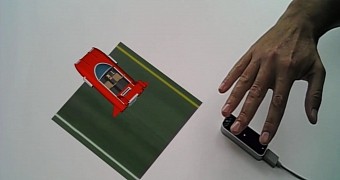Augmented Reality (AR) is the concept of superimposing computer-generated data on top of a real-world video feed or environment. The concept is opposite to Virtual Reality (VR), where a computer-generated reality is assembled and displayed instead of the real world.
AR originates from science fiction literature, but only recent technical and software advances have made it possible in the real world.
Current AR technologies include Google Cardboard, Meta Glasses, Microsoft HoloLens and Magic Leap.
The problem is that all these devices use various types of software, ranging from older C-compiled applications to more modern Android apps running on Java-based code.
Augmented Reality applications can be built using JavaScript
Here is where a tool like awe.js comes into play, a JavaScript library for building AR-capable Web applications that can run in your browsers.
The library uses a combination between WebGL, WebRTC, and the W3C Sensor API to allow 2D or 3D objects to be superimposed on top of a video feed.
Objects are rendered and displayed using the Three.js JavaScript 3D library, and they are triggered when a visual marker is detected in the video feed (like a QR code).
When this happens, awe.js plots out the objects on the user's screen, which they can then interact with, using the mouse or touch-based gestures.
awe.js apps can also be used together with other sensors and tools, like Oculus Rift, Google Glass, or Leap Motion sensors, to enable developers to create more complex AR applications.
The article that pointed us to awe.js is this SitePoint tutorial by Patric Catanzariti, which will help you create a 3D AR controller that can change the color of an LIFX light bulb (in your room, or on a remote site).
Here are two other different awe.js demos, provided by the library's creators, buildAR:

 14 DAY TRIAL //
14 DAY TRIAL // 
